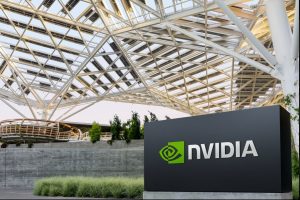SANTA CLARA — At CES 2025, NVIDIA continues to push the boundaries of transportation innovation, with major global automotive companies showcasing cutting-edge mobility solutions powered by NVIDIA’s accelerated computing and AI platforms. From autonomous delivery systems to next-gen passenger vehicles and robotaxis, NVIDIA’s DRIVE AGX platform is central to developing the future of mobility, ensuring more efficient, smarter, and safer transportation.
The NVIDIA DRIVE AGX platform is at the heart of these advancements, with the newly launched DRIVE Thor system-on-a-chip (SoC), built on NVIDIA Blackwell architecture, handling the industry’s most complex, data-intensive tasks. With 1,000 teraflops of accelerated compute performance, DRIVE Thor is designed to accelerate autonomous vehicle (AV) tasks such as recognizing pedestrians, navigating inclement weather, and adapting to dynamic environments. This system is poised to empower the next generation of autonomous vehicles with high-performance, real-time decision-making capabilities.
A standout partnership unveiled at CES is between NVIDIA, Aurora, and Continental, who have joined forces to deploy driverless trucks at scale. Powered by the next-generation DRIVE Thor SoC, this partnership integrates NVIDIA DRIVE Thor and DriveOS into the Aurora Driver, an SAE level 4 autonomous driving system. Continental plans to mass-produce these autonomous trucks by 2027.
NVIDIA’s collaboration with Arm has also resulted in the integration of Arm’s Neoverse V3AE CPU with DRIVE Thor, providing advanced safety features and high-performance computing specifically tailored for automotive applications. This marks the first implementation of Arm’s next-generation automotive CPU, combining safety and data-center-class performance.
In addition to the groundbreaking DRIVE Thor, NVIDIA continues to witness widespread adoption of its previous SoC, DRIVE Orin, which powers mainstream advanced driver-assistance systems (ADAS). Among the major automakers, Toyota has chosen DRIVE Orin for its next-generation vehicles, which will incorporate safety-certified NVIDIA DriveOS to offer advanced driving-assistance capabilities.
At CES, a series of partner demonstrations and vehicle showcases further illustrated the capabilities of NVIDIA’s automotive solutions. Notable vehicles on display included Volvo Cars’ EX90, powered by NVIDIA DRIVE AGX, and the Nuro Driver platform, which integrates NVIDIA technology for autonomous delivery services. Other vehicles featured at CES powered by NVIDIA DRIVE Orin include Zeekr Mix, Zeekr 001, Lotus Eletre Carbon, Rivian R1S, Polestar 3, and the Lucid Air.
NVIDIA’s partners, including Arbe, Cerence, Foretellix, Imagry, Lenovo, Provizio, Quanta, SoundHound AI, Vay, and Zoox, are also pushing innovation in areas ranging from radar technology and AI-driven autonomous systems to voice AI integration and remote driving solutions. These collaborations are advancing the landscape of autonomous mobility, creating smarter, safer, and more efficient transportation solutions.
In its ongoing commitment to safety, NVIDIA announced that its DRIVE AGX Hyperion platform has achieved safety certifications from TÜV SÜD and TÜV Rheinland, setting new benchmarks for autonomous vehicle safety and innovation. Additionally, NVIDIA introduced the DRIVE AI Systems Inspection Lab to help partners meet rigorous safety and cybersecurity requirements.
The introduction of NVIDIA Cosmos, a new platform for scaling AI system development, will accelerate the data processing required for autonomous vehicles. With the Cosmos platform, developers can scale real-world data into virtual miles, dramatically speeding up the development process for AI-driven transportation systems.
Transportation leaders using Cosmos to build physical AI for AVs include Fortellix, Uber, Waabi and Wayve.
Learn more about NVIDIA’s latest automotive news by watching NVIDIA founder and CEO Jensen Huang’s opening keynote at CES.
See notice regarding software product information.



















